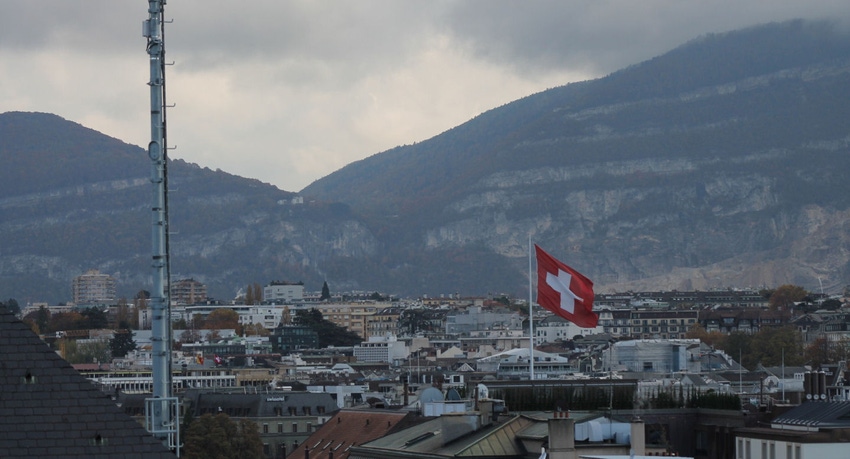It might be a small country, and its citizens might be concentrated in the cities, but Switzerland is driving forward with 5G like few other countries around the world.
August 30, 2019

It might be a small country, and its citizens might be concentrated in the cities, but Switzerland is driving forward with 5G like few other countries around the world.
Switzerland is not the biggest of markets, but it is demonstrating how competition can drive network deployment forward. Alongside market leader Swisscom suggesting it will have 90% population coverage by the end of 2019 for 5G, Sunrise is claiming it has already hit the 80% milestone.
With 262 cities and towns already covered in the 5G blanket, the Swiss consumers are getting treated to a connectivity euphoria few others can claim to match.
“At the start of April, we launched our 5G network for selected customers,” said Olaf Swantee, CEO of Sunrise.
“This makes us the first 5G provider in Switzerland and Europe. Since then, we have successfully extended our lead. The Sunrise 5G network is the biggest in the country and sets a benchmark in terms of coverage quality.
“We do not differentiate between ‘fast’ and ‘wide’, between fast and slow 5G. Private and business customers want good and fast 5G coverage. That’s why we will also be offering 5G coverage in all Sunrise Shops by the end of the year. In addition to this, we will be launching a dedicated solution for companies, allowing them to benefit from 5G as soon as possible to aid their digitization.”
The first phase of this 5G push is upgrading existing cell sites. This is the simplest aspect of the strategy, though with Huawei’s ‘LampSite’ solution the Sunrise team is addressing the indoor coverage dilemma. As the focus on indoor coverage moves forward, the team is quickly turning its attention to driving ROI through enterprise solutions.
So, what is different in Switzerland? How have the telcos driven forward so quickly into the 5G era?
Firstly, you must take into account the size of the country. At 41,284 km2, Switzerland is ranked 132nd worldwide. It is not massive. And with a population of roughly 8.5 million, it is listed at 99th globally.
Secondly, ARPU is notably higher in Switzerland. During the last quarter, ARPU for post-paid customers was £32.01 for Sunrise. This compares to £20.7 at EE in the UK or £15.33 in France with Orange. Not only does this offer more free cash to drive network investments, it provides more security and confidence when judging ROI.
Thirdly, competition is critically important here. With Swisscom being aggressive with its own rollout, Sunrise has to keep pace. And the faster Sunrise moves, it drags Swisscom forward as well. It is competition at its finest, a virtuous cycle.
Finally, the presence of Olaf Swantee should not be underestimated. As Ovum’s Paul Lambert points out, Swantee is aware to the power of 5G, and having led EE’s successful 4G deployment, the drive and experience to move into the next generation is right at the top of the organization.
Sunrise is not particularly in the same league as Swisscom for the moment, though an aggressive push towards 5G could bridge the gap (6.3 million subscribers at Swisscom, versus 2.4 million at Sunrise). This appears to be the strategy employed by Sunrise according to Lambert; scaled 5G coverage offers a differentiator for the telco and an opportunity to capture higher paying customers.
What is worth noting is population coverage is very different to geographical coverage. Switzerland is a highly urbanised country, roughly 73% live in urban environments, easing the demands on network deployment. When you look at the rural landscapes in Switzerland however, the challenges start to mount up very quickly.
This is a common trait in the majority of the markets where 5G has gotten off to a flying start. South Korea is another example of a market moving very quickly towards the 5G era, and once again, it is a highly-urbanised country. The UK is a third which has the advantage of a relatively small land mass, combined with a concentrated population.
Although these are factors which will simplify the network deployment equation, that should not take away from the progress being made across the Swiss telco industry. In the absence of coverage obligations, good old competition and ambition is driving the agenda.
About the Author(s)
You May Also Like








.png?width=300&auto=webp&quality=80&disable=upscale)


_1.jpg?width=300&auto=webp&quality=80&disable=upscale)


.png?width=800&auto=webp&quality=80&disable=upscale)